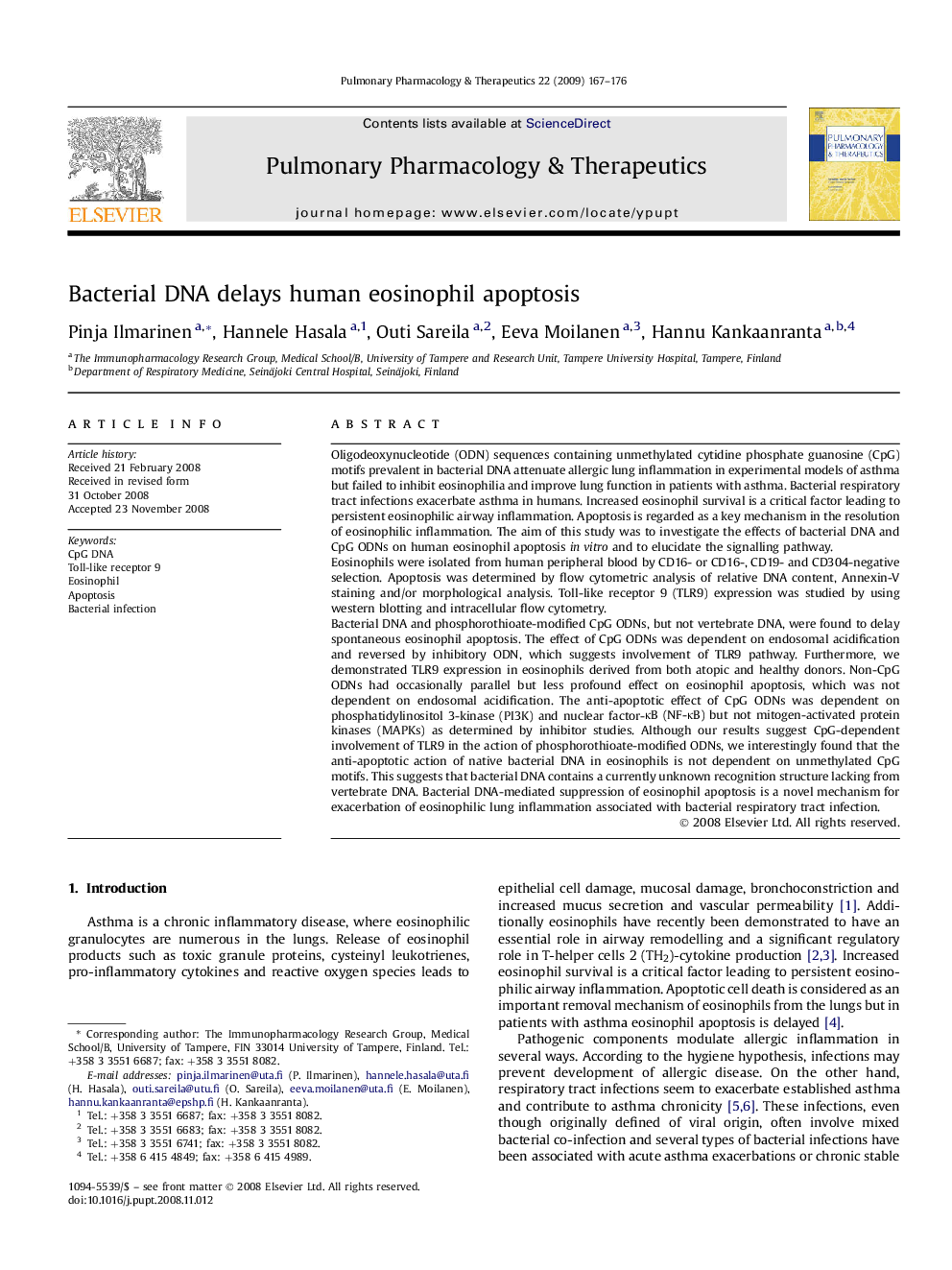| Article ID | Journal | Published Year | Pages | File Type |
|---|---|---|---|---|
| 2567592 | Pulmonary Pharmacology & Therapeutics | 2009 | 10 Pages |
Abstract
Bacterial DNA and phosphorothioate-modified CpG ODNs, but not vertebrate DNA, were found to delay spontaneous eosinophil apoptosis. The effect of CpG ODNs was dependent on endosomal acidification and reversed by inhibitory ODN, which suggests involvement of TLR9 pathway. Furthermore, we demonstrated TLR9 expression in eosinophils derived from both atopic and healthy donors. Non-CpG ODNs had occasionally parallel but less profound effect on eosinophil apoptosis, which was not dependent on endosomal acidification. The anti-apoptotic effect of CpG ODNs was dependent on phosphatidylinositol 3-kinase (PI3K) and nuclear factor-κB (NF-κB) but not mitogen-activated protein kinases (MAPKs) as determined by inhibitor studies. Although our results suggest CpG-dependent involvement of TLR9 in the action of phosphorothioate-modified ODNs, we interestingly found that the anti-apoptotic action of native bacterial DNA in eosinophils is not dependent on unmethylated CpG motifs. This suggests that bacterial DNA contains a currently unknown recognition structure lacking from vertebrate DNA. Bacterial DNA-mediated suppression of eosinophil apoptosis is a novel mechanism for exacerbation of eosinophilic lung inflammation associated with bacterial respiratory tract infection.
Related Topics
Health Sciences
Medicine and Dentistry
Pulmonary and Respiratory Medicine
Authors
Pinja Ilmarinen, Hannele Hasala, Outi Sareila, Eeva Moilanen, Hannu Kankaanranta,
